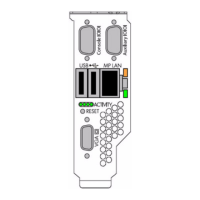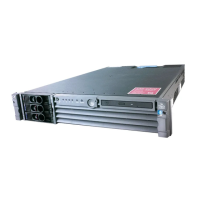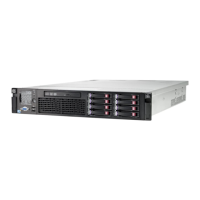Installation Troubleshooting
This section provides basic server troubleshooting information. It is designed to help you diagnose
common issues that can occur during server installation.
Troubleshooting Methodology
The server was tested prior to shipping. Failures encountered during installation can be due to
damage that occurred in transit. Reseating connectors can clear problems that result from rough
handling. If you are installing components or assemblies, compatibility problems or incorrect
installations can be the cause of the problems. If you are installing components or assemblies,
check that items are correctly installed and that all connectors are fully engaged. If the unit does
not power on, check the power source before proceeding.
If a problem is encountered during initial operation, remove any add-in or optional components
and retest the server before continuing. Verify basic server operation before installing additional
cards and configuring software and hardware for the server requirements.
Troubleshooting is based on observation of server status indications and error messages, and by
checking system event logs. You can observe the LED indicators on the front and rear of the server.
Error messages are displayed on local and remote consoles. System history (console, event, and
history logs) is available through the iLO 2 MP, and is accessed through the console. Additional
information about troubleshooting is available in the HP Integrity rx3600 User Service Guide.
Offline troubleshooting programs are available on the HP website. To troubleshoot the server, you
must be familiar with the Offline Diagnostics Environment (ODE) which runs in the Extensible
Firmware Interface (EFI). Descriptions and user information about offline troubleshooting tools are
available at:
http://www.hp.com/bizsupport
The offline tools are available for downloading at:
http://www.software.hp.com.
Troubleshooting Using the Server Power Button
The server Power button on the front panel operates differently depending on how long the button
is held in, and on what the system is doing when the button is pressed. You must be aware of its
uses to properly troubleshoot the system.
Table 19 describes what happens when the server is at EFI, and you press the Power button.
Table 19 Server Power Button Functions When Server is On
ReactionAction
System power turns off immediately at EFI Shell (hard power off).
System powers off when OS is running (software controlled power off)
Push Power button and hold
one-three seconds
System power turns off immediately with EFI or OS running (hard power off).Push Power button and hold five
seconds or longer
If the server is off, and power is not connected to server power supplies, pressing the Power button
has no effect.
If the server is off, and power is connected to server power supplies, the front panel power LED
blinks at a 1 Hz rate. In this state, standby power is available to server circuits, but main power
is off.
Table 20 describes what happens when the server is off, and you press the Power button.
Installation Troubleshooting 71

